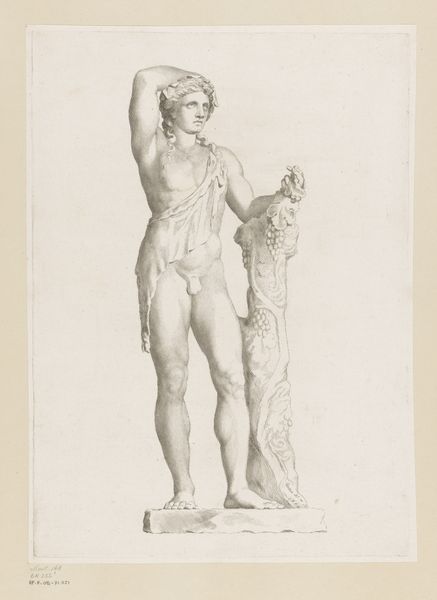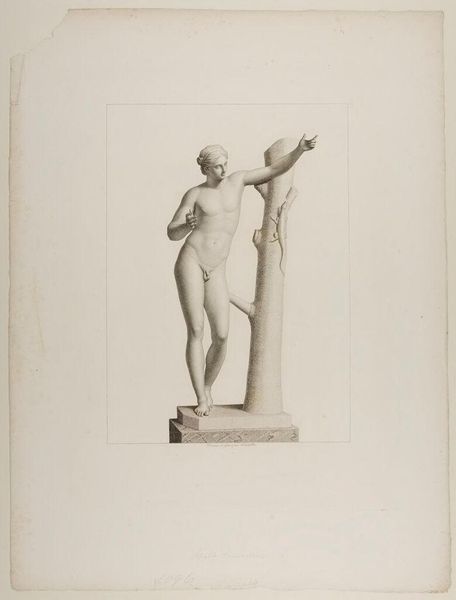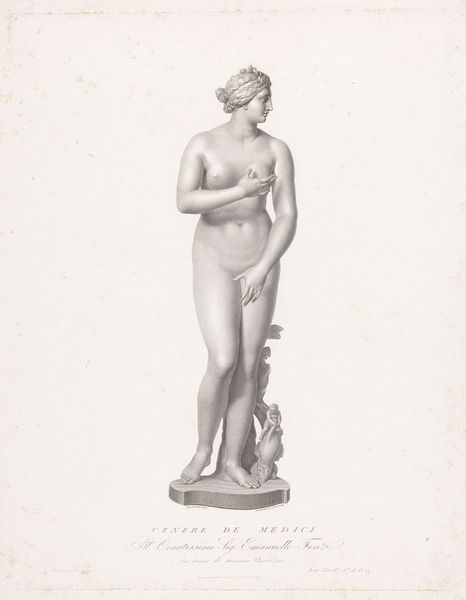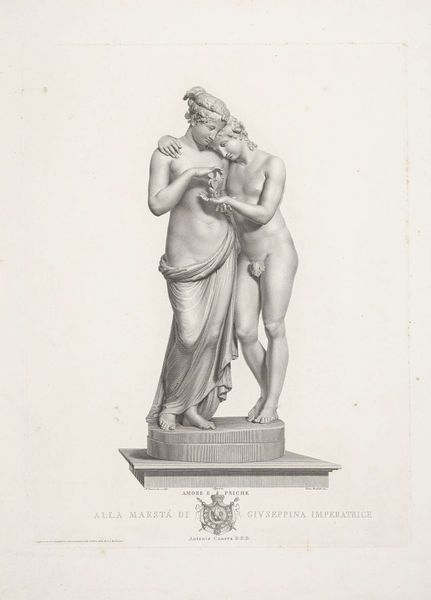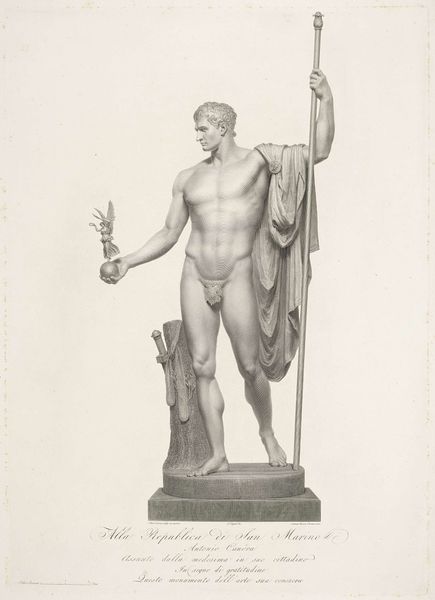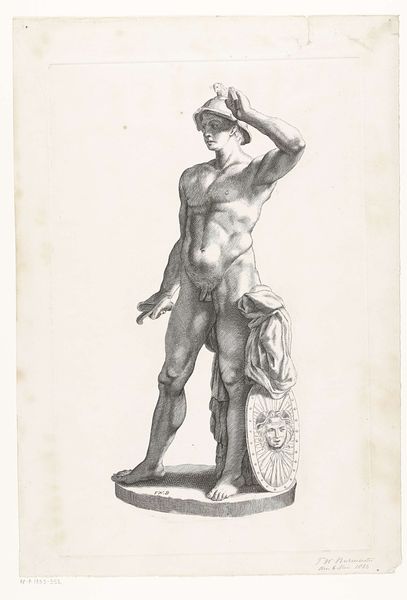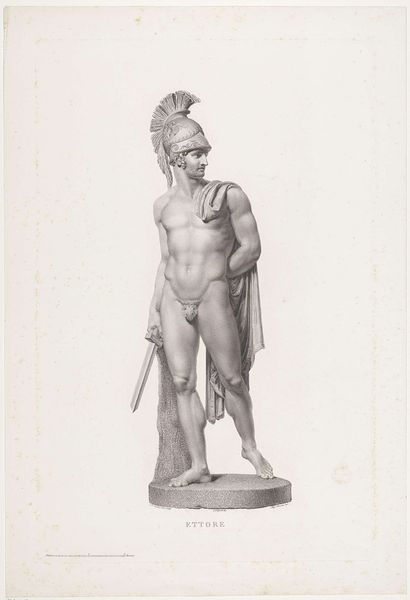
drawing, print, sculpture, graphite
#
pencil drawn
#
drawing
#
neoclacissism
# print
#
classical-realism
#
charcoal drawing
#
figuration
#
pencil drawing
#
sculpture
#
graphite
#
portrait drawing
#
history-painting
#
academic-art
#
graphite
Dimensions: height 510 mm, width 390 mm
Copyright: Rijks Museum: Open Domain
This engraving of the Apollo Belvedere was made by Pietro Fontana, likely in the late 18th or early 19th century. The print's texture comes from the technique used. Engraving involves carefully incising lines into a metal plate, which is then inked and pressed onto paper. The fineness of the lines, achieved by a skilled hand, gives the image its detail. The original Apollo Belvedere was a marble sculpture from antiquity, celebrated for its idealized form. By translating this sculpture into an engraving, Fontana participated in a broader culture of reproduction and dissemination of classical art. Engravings like this one allowed people to experience famous artworks without traveling to see the originals, democratizing access to art, and fueling the era's obsession with classical forms and aesthetics. Fontana's print is not just a copy, it is a testament to the labor involved in reproducing images, and the ways in which classical ideals were spread through skilled craft.
Comments
No comments
Be the first to comment and join the conversation on the ultimate creative platform.
